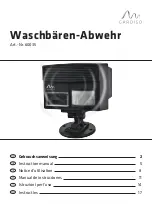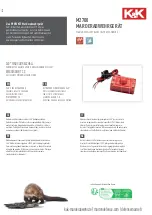
4-35
Programming Reference
ATTENTION: For single-motor applications with no external thermal
overload relay, this parameter should always be set to ON. Failure to
observe this precaution could result in damage to, or destruction of,
the equipment.
For V/Hz regulation, the drive trips after 60 seconds at 150% of Motor Nameplate
Amps (H.002) and will display fault code OL. Lower currents above 100% will take
longer to trip (for example, 25 minutes at 110%). The motor overload protection
fault level depends on the settings of the Motor Overload Type selection (P.041)
and Motor Nameplate Amps (H.002).
For vector regulation, the drive trips after 60 seconds at 150% of Motor Nameplate
Amps (U.004) and will display fault code OL. The overload current amount is
automatically calculated by the GV3000/SE software based on the Motor Nameplate
Amps (U.004).
Important: While the electronic thermal overload relay is similar to a motor
overload relay, neither measures actual motor temperature.
Temperature-measuring devices integral to the motor are the best way
to thermally protect AC motors under all conditions.
P.040 Motor Overload Enable
This parameter
enables the
electronic motor
thermal overload
function. This
function operates
similarly to a motor
overload relay to
protect the motor
from overheating.
P.040 applies to
single-motor
applications only.
Parameter Range:
OFF = Disable electronic motor thermal overload
function
ON = Enable motor thermal overload function
Default Setting:
ON
Parameter Type:
Configurable
Refer also to parameters: P.041 Motor Overload Type
H.002 Motor Nameplate Amps
U.004 Motor Nameplate Amps
P.041 Motor Overload Type
This parameter
specifies the type of
motor being used to
determine the
electronic motor
thermal overload
function
characteristics.
Parameter Range:
nC = Standard motor without forced cooling
FC = Force-cooled motor
Default Setting:
FC
Parameter Type:
Configurable
Refer also to parameters: P.040 Motor Overload Enable
!
















































